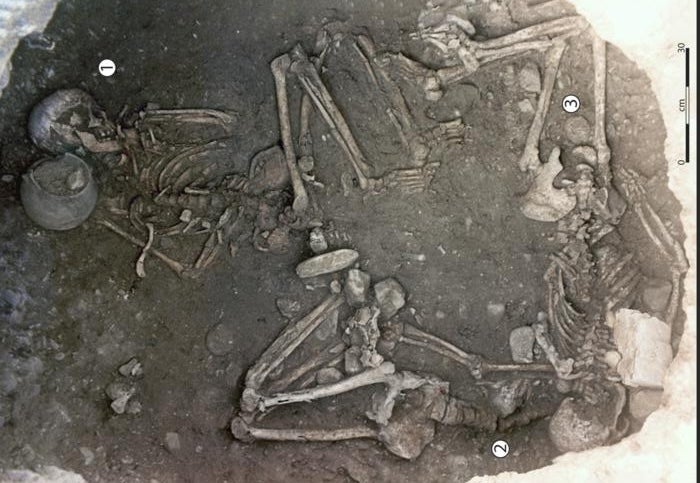Stone age women in Europe were buried alive with legs tied in ritual sacrifices
Sacrificial killing method likely rite related to agriculture, scientists say
Your support helps us to tell the story
From reproductive rights to climate change to Big Tech, The Independent is on the ground when the story is developing. Whether it's investigating the financials of Elon Musk's pro-Trump PAC or producing our latest documentary, 'The A Word', which shines a light on the American women fighting for reproductive rights, we know how important it is to parse out the facts from the messaging.
At such a critical moment in US history, we need reporters on the ground. Your donation allows us to keep sending journalists to speak to both sides of the story.
The Independent is trusted by Americans across the entire political spectrum. And unlike many other quality news outlets, we choose not to lock Americans out of our reporting and analysis with paywalls. We believe quality journalism should be available to everyone, paid for by those who can afford it.
Your support makes all the difference.Murdering sacrificial victims by tying their necks to their legs bent behind their backs may have been a “cultural phenomenon” in late Stone Age Europe, a new study of bodies uncovered in France suggests.
Archaeologists unearthed the bodies of two women who were likely sacrificed between 4000 and 3500 BC at a Neolithic tomb in France.
Researchers scoured existing studies for similar cases of unusual burial practices in Stone Age Europe with abnormally positioned bodies.
They came across more studies of three women in a burial tomb in the Middle Neolithic gathering site of Saint-Paul-Trois-Châteaux, France.
The positions of the human remains at the site suggested two of the three women were murdered through homicidal ligature strangulation and positional asphyxia.
One woman’s position suggests she may have been buried while still alive.
The finding suggests individuals were deliberately killed first by tying them up in a manner called “incaprettamento” – with their necks to their legs bent behind their backs – and then by burying them likely when they were still alive.
While it is clear that the women’s deaths were certainly violent, archaeologists sought more evidence to determine whether the scene was related to a larger-scale Neolithic tradition, likely linked to agricultural practices.
They then assessed existing anthropological and archaeological literature and found reports from 14 sites across Eastern Europe to Catalonia of similar burials.
Overall, researchers found 20 cases in total that bore similarities to what happened to the two women uncovered in France.

The earliest example of this method of killing sacrificial victims was dated to 5400-4800 BCE, suggesting forced positional asphyxia persisted as a technique for over 2,000 years.
“This cultural phenomenon could have diversified in Central Europe and structured itself at different rates for almost two millennia before culminating in the late Middle Neolithic,” scientists concluded.
The method of killing likely originated as a sacrificial custom before the advent of agriculture, later being used for human sacrifices linked to farming in the Neolithic period, researchers suspect.

Join our commenting forum
Join thought-provoking conversations, follow other Independent readers and see their replies
Comments